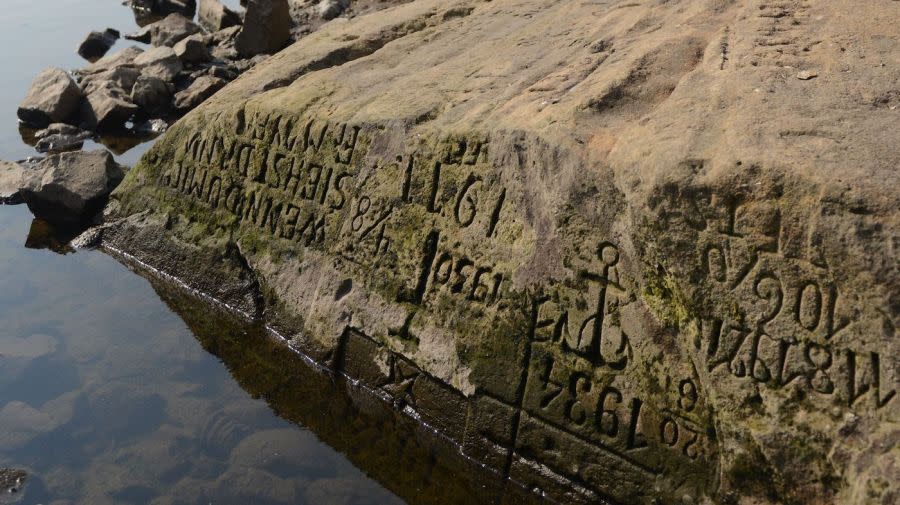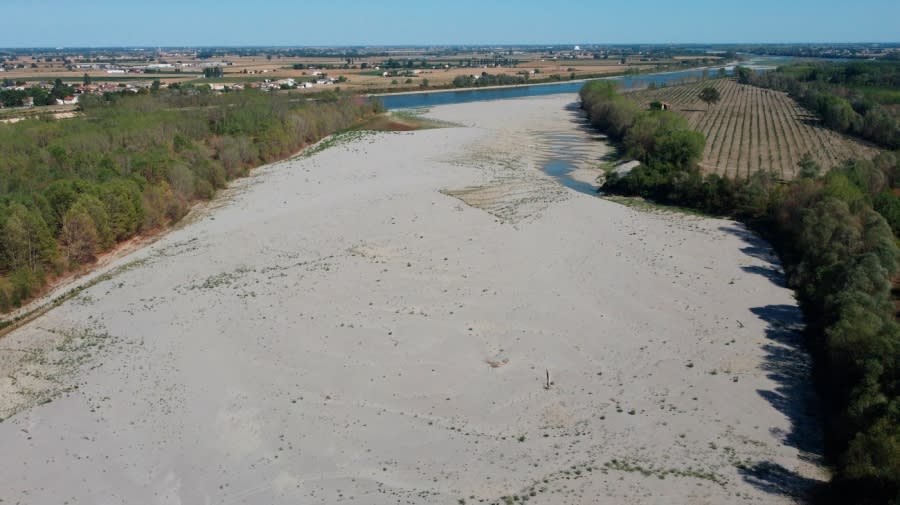Five weirdest things exposed by drying lakes and rivers
Falling water levels in lakes and rivers across the globe have caused great concern among climate experts, and they have also led people to stumble upon a range of newly uncovered relics, from sunken ships to human remains.
Nearly half of Europe is facing drought warnings, while dry conditions in the American West, the worst in more than 1,000 years, led to water allocation cutbacks last week for states along the Colorado River.
A European Union-commissioned report from the Global Drought Observatory released this month found that 47 percent of Europe is in drought warning conditions, and 17 percent of the region meets the threshold for alert conditions.
As policymakers bring new urgency to addressing droughts in the U.S. and across the globe, here are five of the weirdest things exposed by lakes and rivers that are drying up:
Nazi warships
The drought has brought the Danube River, the second-longest in Europe, to some of the lowest water levels seen in nearly a century.
The levels have threatened shipping, especially in the Serbian section of the river, where officials have begun dredging to keep vessels moving through the waterway.
Near the port town of Prahovo, locals have found the hulks of dozens of Nazi warships, raising concerns about potential unexploded ammunition still aboard, Reuters reported last week.
“The German flotilla has left behind a big ecological disaster that threatens us, people of Prahovo,” local resident Velimir Trajilovic told Reuters.
The outlet reported the vessels were once operated by Nazi Germany’s fleet in the Black Sea and passed through the Danube River as they were retreating from Soviet forces.
Dinosaur tracks

At Texas’s Dinosaur Valley State Park, 113 million-year-old dinosaur tracks are preserved in the riverbed. They are typically covered by water and sediment, hindering their visibility.
But recent dry conditions this summer have lowered water levels at the park, located near Fort Worth, leading visitors last week to see the ancient tracks more exposed than ever.
Recent rains have since improved conditions, but the park wrote on its Facebook page it was not enough to fill the Paluxy River, which runs through the park.
Jeff Davis, the state park’s superintendent, said that employees who have worked at the site for upward of 10 years have never seen the tracks so clearly.
“You won’t find them anywhere in the world,” Davis told Nexstar Media, The Hill’s parent company. “You can actually see their individual toes, their individual claw marks. You can even see where they slipped as they were running.”
Hunger stones

The Guardian reported late last week that low water levels in the Czech Republic section of the Elbe River have revealed a sharp warning inscribed in German centuries ago: “Wenn du mich siehst, dann weine.”
The phrase translates to “If you see me, then weep.”
The inscription was written as a famine warning to future generations. This particular hunger stone was found near the town of Děčín, located in the northern region of the Czech Republic close to the country’s border with Germany.
The recent drought isn’t the first time such inscriptions have been visible in recent years. NPR reported a hunger stone was visible in Děčín in 2018 during a separate drought and heat wave, and many additional hunger stones exist throughout the region.
‘Spanish Stonehenge‘

Many are familiar with Stonehenge in the United Kingdom, but the recent drought has once again revealed the “Spanish Stonehenge” in the Valdecanas reservoir, located in western Spain.
Reuters reported the prehistoric stone circle is now visible for the fourth time since the area was flooded in 1963 as part of a rural development project. The arrangement is officially called the Dolmen of Guadalperal and is believed to have been created close to 5,000 BC.
“It’s a surprise, it’s a rare opportunity to be able to access it,” archaeologist Enrique Cedillo told Reuters.
Unexploded bomb

The BBC reported that a group of fishermen found an unexploded bomb from World War II on the banks of the Po in Italy last month.
Italian military officials said the bomb, which weighed roughly 1,000 pounds, contained 530 pounds of explosives, BBC reported.
The object was found near Borgo Virgilio, located in the Lombardy province in the northern region of Italy.
Italy’s executive branch last month declared a state of emergency for five provinces until the end of the year in response to the drought and low water levels in the Po and the Eastern Alps. The move provided 36.5 million euros to the affected areas.
“For the Po basin, this is the most serious water crisis of the last seventy years, according to analysis by the Po River District Basin Authority,” Italian Prime Minister Mario Draghi said at a press conference in late June.
For the latest news, weather, sports, and streaming video, head to The Hill.

